Need for Adapting Modern Information Systems in Military Operations
The Information and Communication Technologies (ICT) today are capable of revolutionizing military operations. Since early 90’s Indian Armed Forces have gained immensely from using the modern ICT. A lot still needs to be done in terms of structural and cultural changes. Critical issues that need to be addressed include importance and limitations of information in military operations, understanding ‘command and control’, distributed decision making processes as against top down approach, network centricity as a strategy and mechanics of decision science. In order to ensure contextual comprehension of these issues two relevant cases from past military events will be helpful. Operational and tactical details of these operations fought in 1965 and 1971 are described very briefly to flag the aspects germane to our discussion.
The Battle of Dograi Indo Pak War 1965
On 05 September 1965, 54 Infantry Brigade of 15 Infantry Division (11 Corps), embarked on one of the most audacious operations of Indo- Pak War ’65 to capture bridges on the Ichhogil canal East of Lahore as also the small town of Dograi just a kilometer away. This would prevent Pakistani armour from threatening Indian territory to the West of the canal and bring immense pressure on the Pakistani political leadership.
On 6 September 1965 Lt Col (later Brigadier) D E Hayde’s 3 JAT crossed the canal and captured Dograi. But fortunately for Pakistan the follow up echelons did not exploit this extraordinary success. When the Pakistan Air Force (PAF) strafed the JATs the Indian Air Force (IAF) could not support them as it was busy fighting in the Chhamb sector. Instead of reinforcing 3 JAT with much needed anti-tank weapons and pushing the armoured squadron (14 battle tanks) into the bridgehead the brigade commander 54 Infantry Brigade asked the unit to pull back to own side of the canal. An exceptionally rare opportunity was frittered away. However, 17 days after this event 3 JAT was asked to capture Dograi again. The gallant battalion once again launched an attack against heavily fortified Pakistani defences and captured Dograi on 22 September 1965 .But this time 3 JAT paid a heavier price- 58 men killed including 4 officers and 157 men injured including 6 officers. The fact that Pakistanis suffered more than four times this number does not reduce the gravity of this loss.1
From 5th to 22ndSeptember’ 65, it appeared that only one infantry battalion was fighting in this sector. Though as per the 11 Corps plan a full infantry division, with integral armoured regiment (45 battle tanks) divisional artillery (18 Medium and 36 Field Guns), anti-air units and the supporting arms were tasked for this offensive.2 Here are some more facts relevant to the case:
- 3 JAT was the leading battalion of the advancing brigade. Its original task was to establish a firm base West of Ichhogil at Gosal. Another battalion from this brigade (15 DOGRA) following 3 JAT was to establish the bridgehead. Commanding Officer 15 DOGRA on reaching the firm base established by 3 JAT told the brigade commander that the battalion cannot attack across the canal since they had suffered casualties during the advance. The brigade commander then asked 3 JAT to attack across the canal. 2
- The divisional commander did not have situational awareness and hence was not effective in executing the Corps Plan. There appeared to be a communication gap between the brigade and divisional commander on the issue of withdrawal of the unit from the bridgehead. The brigade commander informed that he had taken orders from the divisional commander for the withdrawal. The latter denied any such orders given by him to the brigade commander. 3
- The Corps Commander who had ordered the operations was not able to get the most critical close air support to help 3JAT hold onto the bridgehead.4
Operations in the Shakargarh Bulge Indo Pak War 1971
On 5 December 1971, Lt Col (later Lt General) Hanut Singh - commanding officer of the famous Poona Horse was deployed at the International Border in the Shakargarh Bulge on the Western Front. Hanut was told that he was facing Pakistani defensive minefield and a deliberate bridgehead operation will be launched by two infantry divisions of the Corps ( India’s 1 Corps) so that own armour could induct for the offensive. A day earlier Pakistan had declared war. The PAF strike air craft were conducting search and destroy mission in the area- though they could not see Poona Horse tanks due to some excellent camouflage.
Hanut saw a 30 feet high Pakistani observation post close to his position and felt that enemy will be able to direct accurate fire on his troops from the observation post. He asked one of his tanks to get the tower down. Three Pakistani tanks hidden in the elephant grass close by panicked and moved back towards their rear location. Hanut was quick to realize that the minefield that he was waiting to be breached for his advance did not exist. He informed his brigade commander (Brigadier- later General A S Vaidya commander 16 Independent Armoured Brigade). This vital piece of information was ignored. The ‘deliberate’ operations proceeded as ‘planned’. Consequently two Infantry divisions of 1 Corps breached the ‘minefield’- which either did not exist or was insignificant. They also attacked in thin air capturing enemy positions where no enemy was present. The divisions then spent time for regrouping. Thus, when Poona Horse and leading elements of Indian Strike Corps actually contacted Pakistani troops after more than a week of this deliberate and cautious advance of Indian Strike Corps the latter were well prepared and ready to meet the offensive.5It took some exceptionally brave fighting by the men of Poona Horse under Hanut and 3 GRENADIERS to beat back very brave counter attacks by the Pakistani local formation. By the time the war ended Indian Strike Corps had captured area which did not have any strategic importance.
The entire operation was launched to ensure that the Pakistani Strike Corps in the Area (Pakistani 1 Corps) does not conduct offensive into Indian territory and cut off Jammu and Kashmir from rest of India.6As it emerged the Pakistani Corps Commander had no such plans to go on offensive. In the words of Agha H Amin of Pakistan Army the Pakistani corps commander was acting more as a ‘sentry’.7Some additional facts relevant to the case are as under:
- As per the regimental history of the war written by Poona Horse the formations were told about this impending operation sometime in October 71. The actual conflict had started in November 71 in the Eastern Theatre. On the Western Front the war started on 4 December 71. Thus giving enough time to gather relevant information in the target area. (October to December 71)8
- During the stage management of units and formations to their battle positions there was utter confusion. Armoured regiments getting bogged down at choke points in own territory. An infantry division in the area was not aware that Poona Horse had arrived. One of their officer-led-patrol was about to shoot down Hanut in the rest house mistaking him as a Pakistani officer!9
Brief Description of Some Terms Relevant to the Study
For this paper it will be prudent to develop common understanding about some terms relevant to our discussion. These terms include, information (and its relevance in the information age war), command and control, culture and structure (of an organization), network centricity and lastly the process of decision making.
Information comprises of pieces of data that make some sense but insufficient to generate decision option. A commander seeks information based on, ‘what he wants to do’. What a commander wants to do is driven by, ‘who or what he is’. Thus the chain of data, information, intelligence and decision is contextual as well as subjective. 10 What Hayde and Hanut of our cases wanted to know and do never occurred to other commanders along and across the chain.
Command and control is a term generally confused with communication. Stephen J Andriole and Stanley M Halpin interacted with a large number of officers in the Pentagon in 1989. They learnt that ‘means of communication’ are being mistaken for command and control.11 In the Indian context too Rahul K Bhonsle -while referring to command control and communication mentions, “Command and control is exercised at the battalion level and above by communications. An important deficiency during Dograi One was lack of adequate radio communications with 3 JAT to transmit success achieved to the formation, which in turn led to a degree of alarm in the rear”. 12 When 3 JAT had established the lodgement across the canal the commander 54 Infantry Brigade should (normally) have been be in the firm base with 15 DOGRA quite capable of seeing and hearing the battle. What communications did the commander 54 Infantry Brigade need to give the all-important decision that anti-tank weapons of 15 DOGRA (the battalion in the firm base) as also a squadron of armour should be immediately inducted into the bridgehead? Similarly, what additional communication did Commander 16 Independent Armoured Brigade need to take the command decision of advancing through a minefield which in actuals did not exist? Frank Barnby in his book, ‘The Automated Battlefield’ describes command and control as monitoring own and enemy strength and resources, specific conflict situations, assess warning signals, military capabilities, choose options, negotiate and terminate conflicts.13 Command broadly stated is determination of what to do, control is ongoing management of the execution of the command (Lehaer).14 Thus command is primarily a decision making function whereas control deals with all other functions that enable execution of the decision. As is evident from our cases command is subjective and is function and measure of leadership of the person in command.
Organizational culture- as per some important literature on the subject defines how an organization does things, the values and ethics that integrate the members in the organization.15 Can leadership bring about changes in organizational culture? Perhaps yes. But it takes a number of leaders to bring about sustained change in organizational culture. In our case of 3 JAT and the Poona Horse worked on unique culture not displayed by other infantry battalions and armored regiments in 1965 (Ichhogil) and 1971(Basantar) respectively. Organizational structure on the other hand is more tangible aspect. It deals with rules, roles, responsibilities and flow of information.16 In a sense these two units had the same structure as any other infantry battalion or armoured regiment respectively. Our cases (and there are many such cases) bring out the fact that given the same structure organizational culture plays a dominant role in the performance of a unit in battle. In military parlance this is also referred to as élan or esprit de corps of the unit.
Network Centricity is about creating impact at the point of interest (objective or the target) by synergizing the capabilities of relevant components of the network.17 If 54 Infantry Brigade had acted as per the network centric approach then 3 JAT would not have been left to fend for itself in the lodgment east of the canal. Anti-tank weapons, armoured squadron and other warlike stores would have been inducted across from 15 DOGRA at Gosal in the firm base. The divisional artillery would have been switched towards Lahore to support holding of the bridgehead. Close air support would have been diverted from Chhamb sector towards Amritsar-Lahore Axis. Similarly, in the Shakargarh Bulge the entire 16 Independent Armoured Brigade would have crossed the minefield. The two infantry divisions would not have wasted time in deliberate bridgehead operation. All this would have preponed contacting the defenders across Bsantar by 10 days. This would have changed the course of events in 1971 on the Western Front.
Decision making or the Observe, Orient, Decide and Act Cycle is primarily a function of the type of leader involved in the process all other factors of technology remaining the same. It is this non-technology factor that makes the biggest difference. Leaders who are optimistic or proactive look for maximizing the gains from a given piece of information/ opportunity take bold decision with calculated risks and stretch the organizational performance during the execution of the plan.18 In our case leaders of 3 JAT and Poona Horse belonged to this category. Leaders with pessimistic or reactive approach tend to minimize the losses and hence settle for sub optimal goals thus avoiding even low levels risks. There were more examples of this type of leadership along the Amritsar-Lahore Axis in 1965, and battle of Basantar in 1971.
Distributed Architecture of Command and Control
In a military environment command and control will have to be a distributed system in hostile eco system. Imagine if Hayde and Hanut had powers to take bigger decisions (ordering induction of armour and anti-tank weapons in case of Dograi and hastening the advance of 16 Independent Armoured Brigade and other formations tasked for the deliberate bridgehead in battle of Basantar the outcomes would have been different. A schematic depiction of distributed command and control system along with five hierarchies – national, strategic, operational, tactical and functional is given at Figure 1 Below. In 1965 as also in 1971 the Western Command depicts the theater level node. The operational nodes are the Corps at times divisional headquarters. The tactical nodes are divisional and brigade headquarters. The battalions are the troops in contact. Information from the respective surveillance networks (national, theatre, operational and tactical assets) flows to their respective nodes and can be made available to the lower level nodes through information gateways. Similarly, information flows bottom up from the forward sensors.
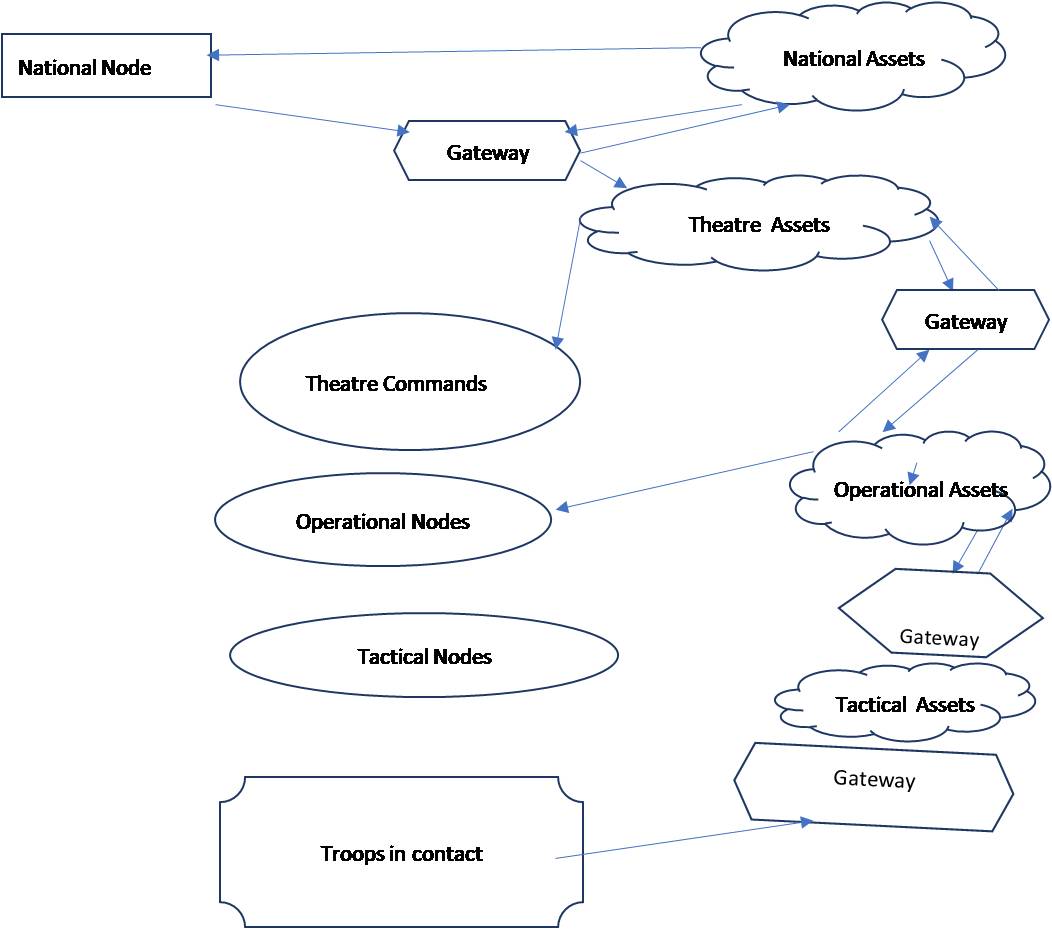
Each of the C2 nodes has its own system of gathering information, converting it into intelligence, appropriate decision support systems to evaluate various decision options derived from the alternatives. These nodes also have control organizations for setting objectives and control measures to ensure that the plan adopted for activation goes through as per dynamically established parameters. As the plan is executed for given outcomes or immediate objectives the feedback channels provide the level of efficiency with which the plan process is executed. The feedback from one process provides intelligence input as also experiential learning that can be used in dynamically updated decision support system.
The distributed C2 systems in a combat environment need to be synergistically integrated so that intelligence as also learning from one plan/process is suitably used in the next cycle of plan. Thus while each level of node has its own intelligence and decision support system these are integrated with the help of appropriately designed gateways so that when operations controlled and coordinated at lower level of nodes require inputs from the strategic nodes these can be pulled in.
The process of converting information to plan options need to go through cognitive system engineering. The system identifies the substantive inference and decision making requirements with suitable displays. The inference making requirements include assessment of events and conditions, likely outcome and identification of high probability crisis situations. The decision making requirements should encompass generation and evaluation of options, assessment of operational constraints, ‘what if ‘, conditional analysis calculation of decision option outcomes, historical precedents and intergroup as also intra group communications. The display to support the decision should bring out cost benefit ratio, alternative options, option rank order and decision option outcome.19 A simplistic schematic diagram of cognitive system engineering is given at Figure 2 below:-
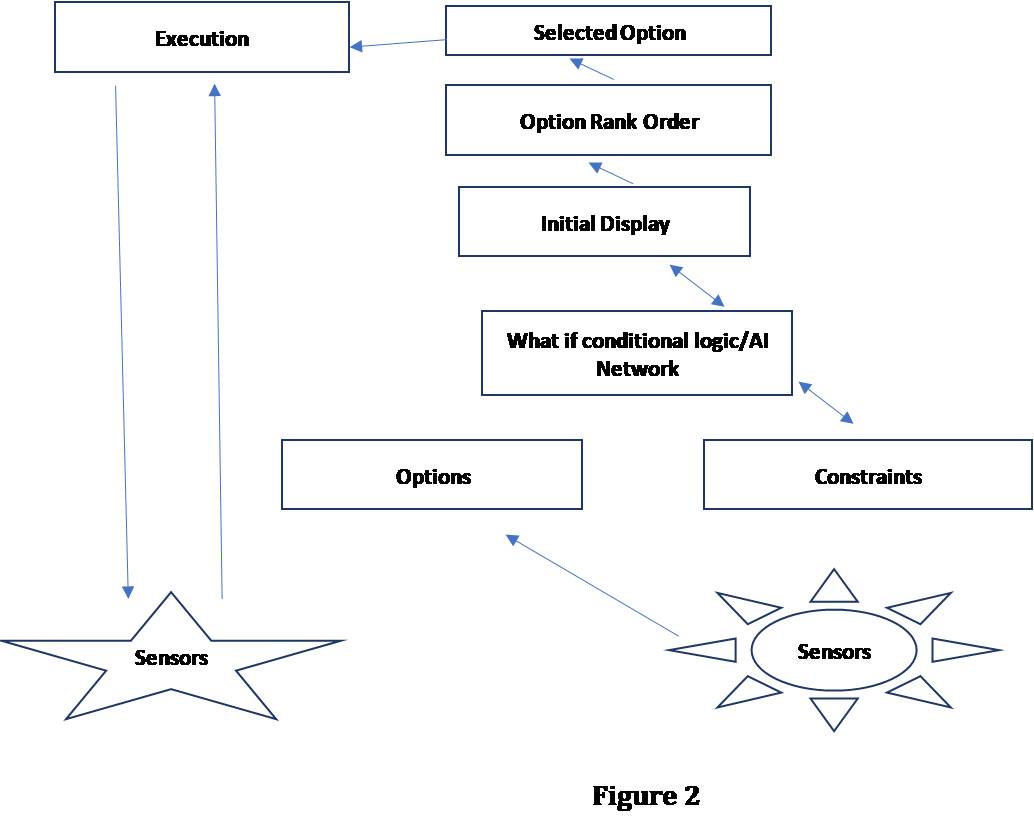
The schematic diagram of converting information to decision alternatives given above includes the feedback link which in essence is another set of sensor network that picks up the impact of execution, compares it with the desired impact, analyses the differences and generates options to improve upon the execution cycle. All these learning get stored in the knowledge base at the C2 node. The, ‘what if’, conditional algorithm can be replaced by Artificial Intelligence (AI) networks that ensure self-learning and correcting through smart agents. In AI network the concept of communication is different from that generally understood in transmission media that sends and receives data. In AI networks various types of agents (small programmes written for performing tasks in collaboration and cooperation with each other) communicate with each other to ensure self-learning.20
Comparing Standalone/Intelligence Expert System with AI System of Decision Making
We have briefly touched upon the expert system based decision supportwith AI. To gauge the relevance and reliability of these systems we need to look at the way these two systems function. The stand alone or intelligent expert systems (SES, or IES) primarily uses the data created on given situation by a single expert or a group of experts distributed over various nodes. These data bases are created based on given condition or set of conditions. Over time these may become outdated or the situation at hand may be quite different than that from which data bases emerged. Hence, unless in case of comparatively mechanical activities such as fire support in the tactical battle or logistics for a given plan more complex activities such as manoeuvers’ plans etc. may not be suitable for such simplistic expert system based Decision Support System (DSS). In comparison the AI based systems are more dynamic and suitable for real time DSS. Since AI as a system is self-learning. After the initial environment as also action outcome algorithm are written the smart agents communicating and collaborating with each other ensure that the system learns with each iteration and comes up with real time decision alternatives beyond the capabilities of a data base of experts. Nevertheless the software for the AI systems including those for the smart collaborating, cooperating and intelligent agents in AI are also written by experts from diverse fields (military, philosophy, mathematics, physics, operation research, sociology, culture, management and science etc.). Thus AI too needs human intervention.
Sensor Integration and Data Fusion
Data fusion and data integration are important aspects of surveillance network. Hence understanding these terms is important for further discussion. Data Fusion is a multilevel, multifaceted process dealing with the automatic detection, association, correlation, estimation, and combination of data and information from single and multiple sources.21 In case of data integration, it identifies functional and data commonalities among systems and eliminates redundancy by aggregating these aspects into a reduced number of modernized data systems in a shared environment. Bringing applications into the shared environment can include some or all of the following; moving systems onto a common infrastructure; sharing data to provide a single logical authoritative source, view and interpretation of data. 22
The surveillance network at each level comprises of variety of sensors that are based on specific technology for picking up the target profile. These sensors also include human intelligence provided to the sensor in specific form. At the lowest level the troops in contact will have ground deployed sensors based on seismic, thermal, optical signatures of the target. At tactical and operational levels air borne sensors, low orbit satellites, Electronic Intelligence (ELINT) or Electronic Support Measures (ESM) are likely to be used. At the theatre and national levels international intelligence resources may be made available by the friendly countries.
A Typical C2 Node
This node typically performs two very critical functions in a malevolent military environment. First is the function of decision taking which means command function; secondly, execution of the decision through control measures. These two functions will need dynamic data bases, decision support systems and contextual knowledge bases. To ensure real time information, and up-dated data bases the C2 nodes need to be connected with multi sensor platforms, troops in contact through data integration and data fusion system.
The chain of picking up information and execution of plan is shown in the Figure 2 given above. Linkages of C2 node with the multi sensor platforms and troops in contact is given in Figure 3 below:
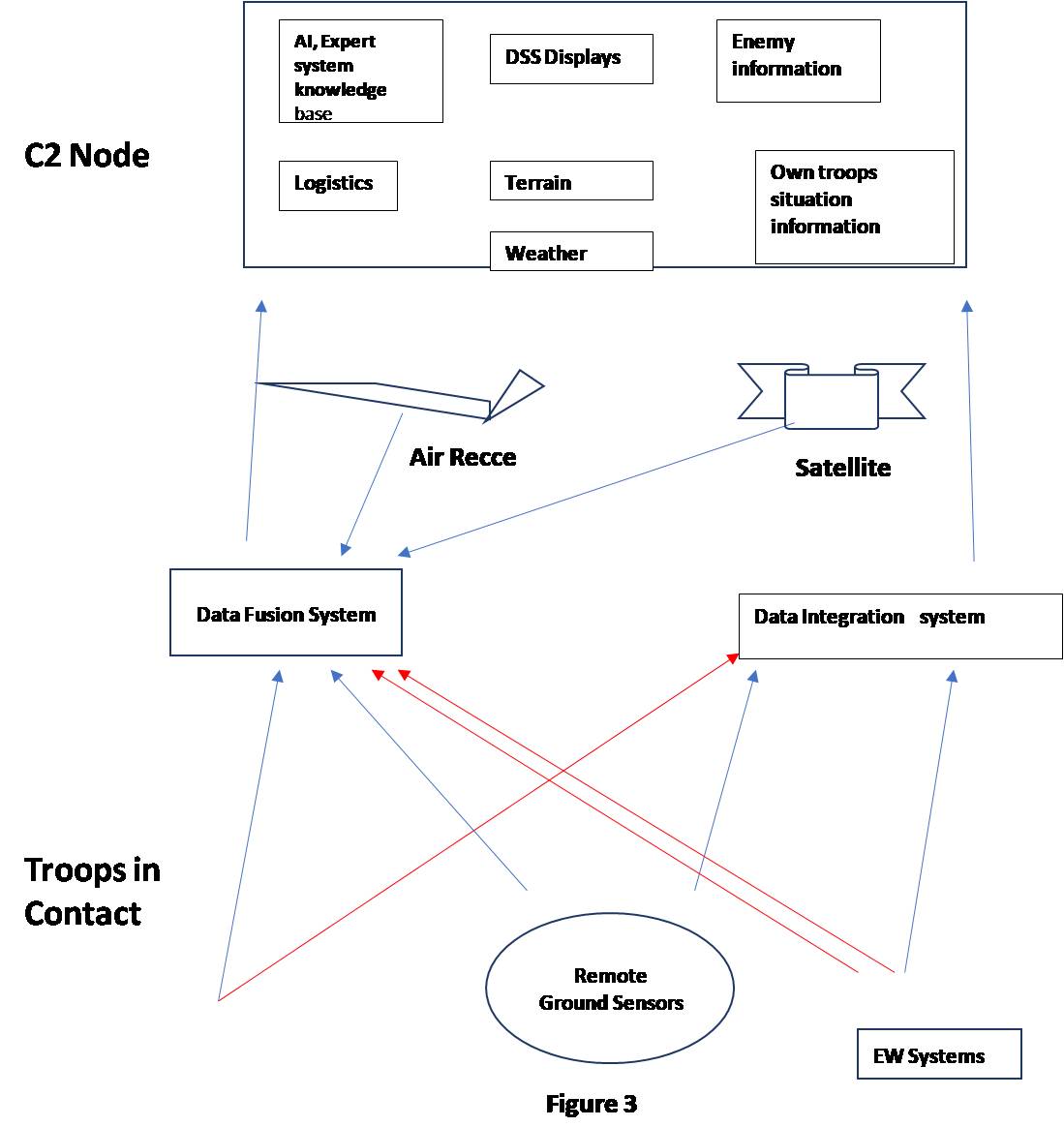
If the Battles of Dograi and Basantar were to be Fought now?
Let us look at the key issues- in order of priority, assuming that the Armed Forces use the available technologies optimally. First the leadership along and across the chain of command need to answer the most important question, ‘What do we want to do? Answer to this question in case of Dograi battle would be an unequivocal, ‘capture Lahore and all bridges in the vicinity to its East on the Ichhogil Canal. On 5 September 65 only Lt Col Hayde had this clarity. His orders to his troops were, ‘dead or alive on the other side of Ichhogil’. Thus to start with there is need to ensure synergy in thought before we hope for synergy in operations. Synergy in thought would have answered the question, ‘who we are? In the battle of Basantar also Hanut’s clarity and boldness was not shared by many. Hanut’s orders to his men protecting the all-important bridgehead were,’ no tank will withdraw an inch. Fight from where you are.’ Considering the situation that Poona Horse was in the battle these orders answered the question ‘what you want to do’ and ‘who you are’.
What you want to know- the role of information comes next. A series of ‘intelligence’ questions need to be formed and sources tasked to get answers to these within a stipulated time. These questions will cover cognitive, physical and technological aspects about the enemy. Thus enemy’s commanders and their personality traits, intentions, probable plans and actions, likely force levels and their application in time and space, physical attributes of terrain and weather,weapon systems, communication network, software used etc will form major sets of questions. Surveillance networks at various levels will be deployed to get continuous information on these questions. Realtime answers to these questions will fill the boxes in the situational awareness boxes in the C2 nodes (see Figure 3) at various levels. An important aspect of situational awareness includes information about own troops. This would have helped commanders up the chain in battle of Dograi to know the progress and limitations of other battalions and armoured regiment in the division when 3 JAT had crossed the canal. In Battle of Basantar the Corps Commander of Indian 1 Corps would have known the progress of other elements of his corps when Poona Horse was charging through the minefield and later fighting the Pakistani counter attack. The distributed C2 network would ensure availability of relevant information to the node in time. Such an arrangement would ensure maximum impact at the point of decision.
The modern military information system has the capability to help the commanders in taking decision as also validating the impact of their decision before the plans are operationalized. This has been depicted in Figure 2 in a very simplistic diagram. The sensor inputs as also the plan parameters will be fed to the expert /AI network based systems to generate options and wargame each option. The outputs from such a DSS will help the commanders to check their own decision before launching the plan. Note the decision – of withdrawing from the bridgehead, taken by commander 54 Infantry Brigade in battle of Dograi. The DSS supported by expert system or AI would not have given these options since the software for such eventualities are written by technocrats with inputs from experienced and selected commanders. Besides due to the distributed nature of C2 nodes commanders up the chain would have been actively watching the sequence of events in their respective nodes and thus would have vetoed the retrograde order given by the brigade commander. This comes from synergy of operations in consonance with the objective of the plan. The distributed C2 network would have ensured flexibility in resource allocation. Thus the IAF, long range artillery and armoured units would have been diverted to help Hayde in the bridgehead.
Similarly critical resources of Indian Strike Corps would have supported Hanut in his exploitation of the situation. As the surveillance network picks up the input that the ‘so called minefields are very shallow with 600 to 800 yards of depth, laid with the help of untrained Pakistani villagers, with clearly visible gaps marked by ropes and pegs, manageable minefield density’ the attacking formation would have adopted assault crossing with armour leading the assault. With this speed 1 Corps would have contacted their objective within three to four days of commencement of hostilities instead of remaining more than four kilometres short of the objective after twelve days of ‘steamrolling by inches’ advance adopted by the strike corps.
Conclusion
The modern military information system is much more than the erstwhile signals communication facilitating commanders to pass orders and receive reports. The system today has four key elements architecture, function, optimization and most important purpose as described below:
- Architecture. Inter connected computers, sensors, network devices, organizations and at times individuals (networked soldier/teams).
- Function. Share information, experiences, situational awareness, and contextual knowledge, help commanders in taking strategic, operational and even tactical decisions.
- Optimization. Synergistic and precise application.
- Purpose. For achieving a common goal / objective
If used optimally this would help in
- Dominating the battle space with speed and precision.
- Control the battlefield with overwhelming lethality and superior survivability.
- Mount, execute and recover from operations in quick time frame.
- Be capable of quick decisive victory with minimal casualties.
- Enhance impact by flexibility of application of force
Optimal use of such an information system would entail transformation at the cultural, leadership and technology adaption levels in this order.
End Notes
- https://idsa.in/system/files/jds/jds_9_3_2015_IndianArmysContinuityandTransformation_0.pdfAccessed 20 March 21 Rahul K Bhonsle Vol 9 No 3 July- September 2015
- https://www.indiatimes.com/news/the-battle-of-dograi-when-the-3-jat-battalion-sealed-the-victory-for-india-in-the-1965-war-259753.htmlAccessed 20 March 21Mohinder Dabas September 20, 2017
- https://usiofindia.org/publication/usi-journal/1965-indo-pak-war-a-critical-appraisal/ Accessed 20 March 21 Major General PJS Sandhu July – September 2015
- http://www.indiandefencereview.com/spotlights/indo-pak-war-1965-major-actions/ Accessed 28 March 21 Brig K Kuldip Singh 02 September 2015
- https://web.archive.org/web/20041204124710/http://poonahorse.com/history_indopak2.htm Accessed 28 March 21, The Poona Horse Regimental Association
- http://www.indiandefencereview.com/spotlights/1971-war-battle-of-shakargarh-bulge/0/ Accessed 28 March 21, Major General Sukhwant Singh 10 October 2017
- https://www.researchgate.net/publication/319417965_The_WesternTheatre_in_1971_-_A_Strategic_and_Operational_Analysis By Agha H Amin Accessed 28 March 21, Published first in Defence Journal of Karachi February 2002
- Ibid 5
- Ibid 5
- Pathak Ashok India’s Strategies for Information War and Cyber Deterrence Vitasta Publishing Private Limited New Delhi , 2020 ISBN 9789386473875
- Andriole S L and Halpin S M (1989) Introduction Perspective on Command Control and Information Technology Published in IT for Command and Control Methods and Tools for System Development and Evaluation
- Ibid 1
- Barnaby F The Automated Battlefield ISBN 9780788155796
- Lehner, P. E. (1986). On the role of artificial intelligence in command and control. IEEE Transactions on Systems, Man, & Cybernetics, 16(6), 824–833. https://doi.org/10.1109/TSMC.1986.4309001
- https://hbr.org/2013/05/what-is-organizational-cultureMichael D Watkins 15 September 2013
- https://www.investopedia.com/terms/o/organizational-structure.asp#:~:text=An%20organizational%20structure%20is%20a,between%20levels%20within%20the%20company. Accessed 28 March 21, Will Kenton 01 March 2021
- Ibid 10
- Ibid 10
- Andriole S J and Adelman L Cognitive Systems Engineering for User Computer Interface Design Prototyping and Evaluation ISBN978307449087
- https://www.vifindia.org/article/2019/march/14/artificial-intelligence-communication-and-big-data-for-information-war Accessed 30 March 21. Ashok Pathak, 14 March 2019
- Luo R C Multi Sensor Integration and Fusion Intelligence System Publisher IEEE September October 1989, Electronic ISSN 21682909
- Waltz E L and Buede D M Data Fusion and Decision Support for Command and Control Publishers IEEE November 1986 Electronic ISSN 21682909
(The paper is the author’s individual scholastic articulation. The author certifies that the article/paper is original in content, unpublished and it has not been submitted for publication/web upload elsewhere, and that the facts and figures quoted are duly referenced, as needed, and are believed to be correct). (The paper does not necessarily represent the organisational stance... More >>
Image Source: https://www.strategicfront.org/forums/attachments/1557648555097-png.6546/

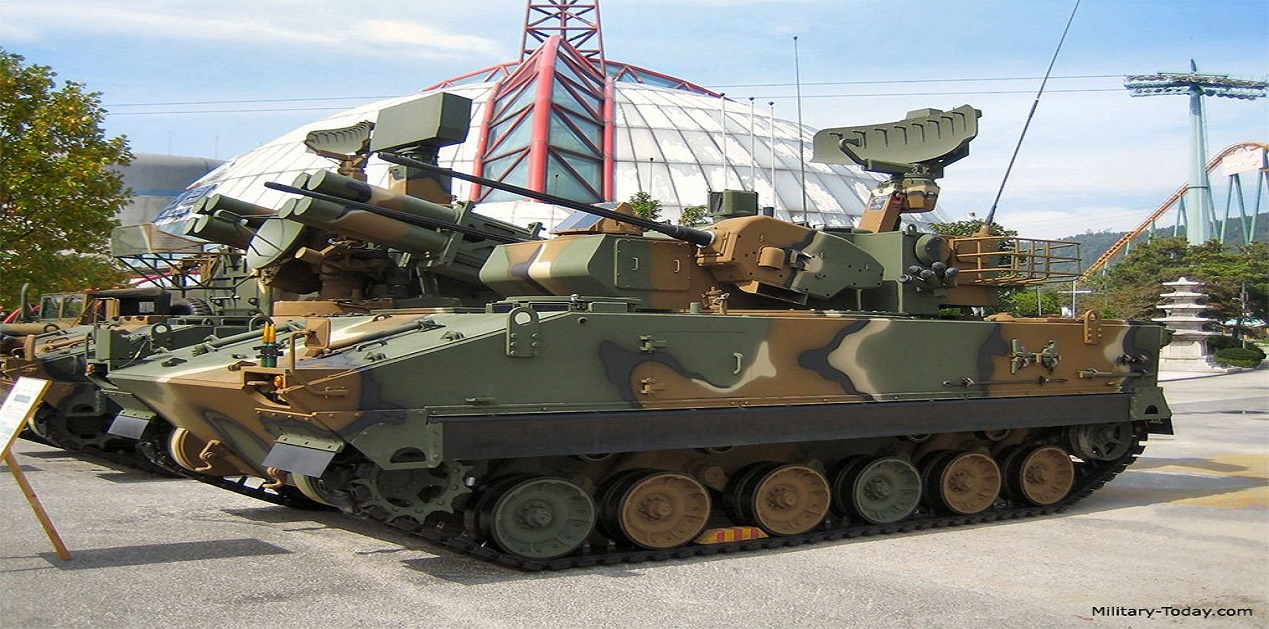
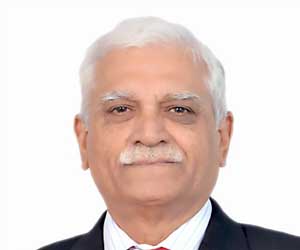

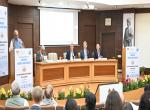






Post new comment